High-yielding cold-resistant cabbage hybrid Tobia f1
Tobia f1 is a hybrid of white cabbage. Included in the state register of the Russian Federation in 2007 and zoned for cultivation in the Middle Volga, North-Western, Central, Volga-Vyatka, West Siberian, Ural, East Siberian districts. Vegetable growers have already appreciated Tobia f1 cabbage for its large fruit, high yield, taste and commercial qualities. The vegetable is adapted to any climatic conditions; its productivity is not affected by either cold or heat.
Description of cabbage hybrid Tobia f1
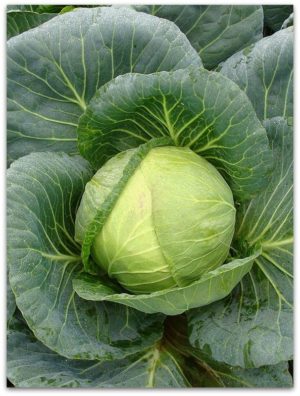
The hybrid was bred by Dutch breeders. Experimental samples showed rapid seed germination, early full ripening, and excellent keeping quality. The purpose of creating Tobia f1 was to provide private vegetable growers and farms with cabbage, which can be harvested either manually or mechanized.
Tobia is an early ripening hybrid. The stalk is small, so the plant itself grows short. Thanks to this, the leaves receive accelerated nutrition and nutrients that contribute to the early formation and maturation of the head of cabbage. They are round-flat in shape and differ in density. The inside of the head is white, its average weight is 5-7 kg. The vegetable reaches technical maturity 90 days after germination.
The upper leaves are dark green with light veins, clearly visible, but not too hard. The surface has a waxy coating. The leaf structure is dense, slightly pimply, with wavy edges.During ripening, they curl into a dense head of cabbage.
Disease resistance
Tobia has strong immunity and resistance to many cabbage diseases, including:
- powdery mildew;
- fusarium;
- blackleg;
- late blight;
- white, gray rot;
- mosaic.
Composition and properties
The rich chemical composition makes Tobia f1 hybrid cabbage an ideal way to replenish and saturate the body with useful nutrients. The vegetable contains the following vitamins, macro- and microelements:
- thiamine (B1);
- pantothenic, ascorbic, nicotinic and folic acids;
- riboflavin;
- biotin (H);
- vitamins K and P;
- potassium;
- sodium;
- magnesium;
- phosphorus;
- sulfur;
- cobalt;
- nickel;
- molybdenum;
- silver;
- tin;
- vanadium.
Tobia cabbage is characterized by an abundance of enzymes. The biochemical composition of the crop places it among the irreplaceable food products and endows it with unique medicinal properties. Fresh cabbage juice has been found to be highly effective for healing wounds, stomach and duodenal ulcers. Sauerkraut reduces the risk of developing cancer, normalizes the functioning of the nervous system, strengthens bone tissue, and improves skin and eye health.
Read also:
The best Dutch varieties and hybrids of white cabbage
The best varieties of cabbage for pickling and storing for the winter
The main advantages and disadvantages of the cabbage hybrid Tobia f1

Among the main advantages, vegetable growers note:
- Pleasant sweetish taste without bitterness. Cabbage is tasty and healthy in any form - fresh, boiled, fried, salted, stewed, baked.
- Resistance of heads of cabbage to cracking. Even when rotted, during storage and transportation, they retain their integrity.
- Resistant to low temperatures (down to -10°C).Heads of cabbage ripen well in open ground conditions.
- Easy care. Growing does not require the use of special measures or expensive fertilizers.
- Good density and juicy texture.
- High yields. With optimal care from 1 sq. m you can collect more than 20 kg of cabbage. On an industrial scale, up to 100 tons are obtained from 1 hectare.
- Versatility of use in cooking. Thanks to the thin leaves and the absence of thick veins, the vegetable has a delicate texture and pleasant taste. It requires a minimum amount of time to prepare.
Disadvantages of a hybrid:
- low shelf life (3 months);
- close placement of outer leaves to the soil surface (increases the risk of rot development).
Features of planting and growing
To obtain a high and high-quality harvest, it is necessary to carry out agrotechnical work correctly. It is best to grow cabbage in seedlings in order to protect the vegetable crop from severe frosts and leave the maximum number of sprouts for ripening.
The timing of planting seedlings varies from April 1 to April 10. This is the most optimal time so that by the end of May the sprouts are completely ready for transplanting into open ground. The development of seedlings from seeds occurs on average 45 days. To grow it, you first need to properly prepare the soil.
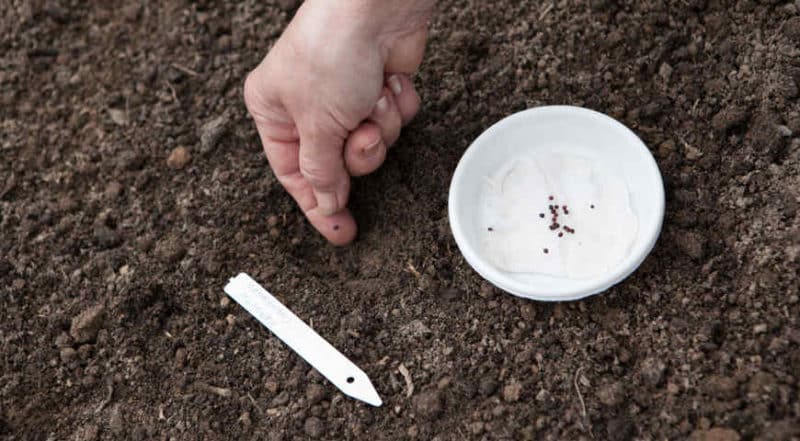
Priming
The best substrate is peat filler, since cabbage loves fertile, loose soil. You can use store-bought mixtures, but for vegetable growers it is preferable to prepare the soil yourself. In addition to peat, compost, turf and humus are added.
Several mixture options:
- humus, turf, sand in proportions 50/45/5;
- sand, peat – 50/50;
- compost, turf, peat – 40/30/30;
- peat, turf, sand – 70/25/5.
Before planting the seeds, the soil for planting is well warmed up. The best options are to pour boiling water or heat in the oven at 200°C. Then the soil is treated with a strong solution of potassium permanganate for disinfection and left for 14 days for the growth of beneficial bacteria.
Planting material
The next stage is preparing the seeds. To do this:
- Correct selection. Large specimens are selected from the total quantity; dried and puny seeds are discarded.
- Hardening. Selected seeds are placed in gauze and immersed in water at a temperature of +50°C. Leave for 20 minutes. Then transfer to cold water.
- Disinfection. For 10-15 minutes, the seeds in the bag are placed in a pink solution of potassium permanganate to prevent blackleg, then washed with running water.
- Stratification. Planting material in gauze is placed in the refrigerator for a day. This time is enough for thread-like roots to appear.
Since Tobia f1 is a hybrid, you need to buy seeds in specialized stores. Your own planting material or purchased from hand will not work; it loses the qualities of the mother plant.
Preparing seedlings
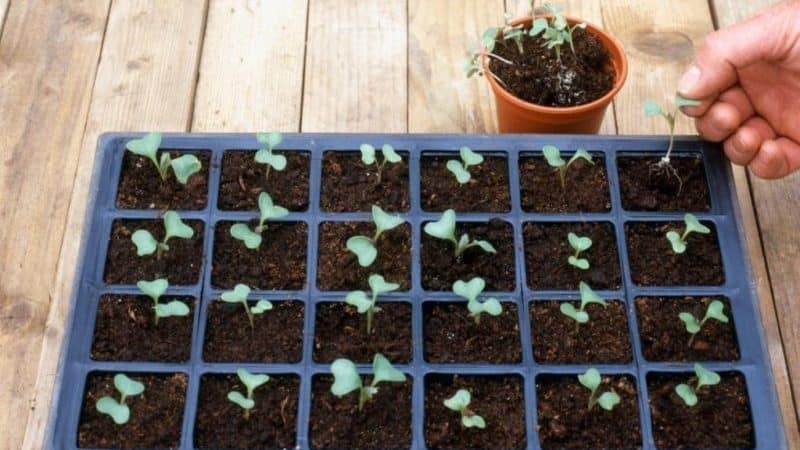
You can sow seeds in separate or common containers. In the latter case, you cannot do without diving. Sowing is performed according to certain rules:
- Place 4-5 cm thick soil substrate in a container for growing seedlings.
- Spray the soil with a fungicide (for example, Gamair).
- After 2-3 days, make grooves to a depth of 1 cm, 3 cm apart and place the seeds at a distance of 1.5 cm.
- Cover the seeds with about 1 cm of soil.
- Leave the container in a room with a temperature of +18…+20°C.
- When the seedlings hatch, it is necessary to create a temperature within +9°C.
Picking is done a week or 10 days after the shoots appear. To do this, place the same soil in plastic cups with the addition of double superphosphate (1 tbsp per 10 liters of water) and wood ash (2 tbsp). The soil surface is sprinkled with river sand to prevent the formation of blackleg. The optimal temperature for the growth of picked seedlings is +15°C.
2.5 weeks before the date of planting in open ground, the sprouts begin to harden, taking them out into the fresh air every day. The initial duration of stay on the street is 20 minutes, followed by an increase in time. During the same period, urea (1 tablespoon) and calcium sulfate (1 tablespoon) dissolved in 10 liters of water are added to the soil where the seedlings grow.
Transplanting

When transplanted into open beds, sprouts should have five leaves and a strong stem. For planting, choose fertile loamy soil with an acid-base balance of no more than 4%. If the indicators are higher, it is recommended to treat the soil with limestone, add humus, compost, wood ash, and phosphorus-potassium fertilizers. The area for growing cabbage should be well lit by the sun. In shaded areas, the head of cabbage will form incorrectly (become loose and broom-like).
On a note. It is better to plant the Tobia hybrid in places where onions, tomatoes, carrots, cucumbers, legumes and grain crops previously grew. Planting sites must be changed every 4 years, as pests and diseases accumulate in the soil.
Holes for the hybrid are made according to the 40*50 cm pattern (row spacing up to 60 cm). The seedlings are buried down to the first leaf in pre-shed soil, which is compacted around the planted sprout.
Non-seedling planting
Tobia cabbage can also be planted from seeds in open ground.This method is used to reduce the amount of work and save time. Planting must be done in a warm and well-moistened loamy substrate. To make it convenient to sow and water, make beds 30-40 cm high and 40 cm wide.
On a note. It is better to form seed holes using the bottom of a glass bottle. This way the soil will be slightly compacted and small grains will not be washed away when watering.
Place 3-4 seeds in the resulting holes (it is better to plant them with a reserve for 100% germination). Then sprinkle with humus, press lightly, cover with a pre-prepared plastic bottle with a cut off bottom and a screwed cap. Cover the container with soil for greater stability.
Care
Caring for the Tobia f1 hybrid is carried out according to the standard agrotechnical scheme.
Watering
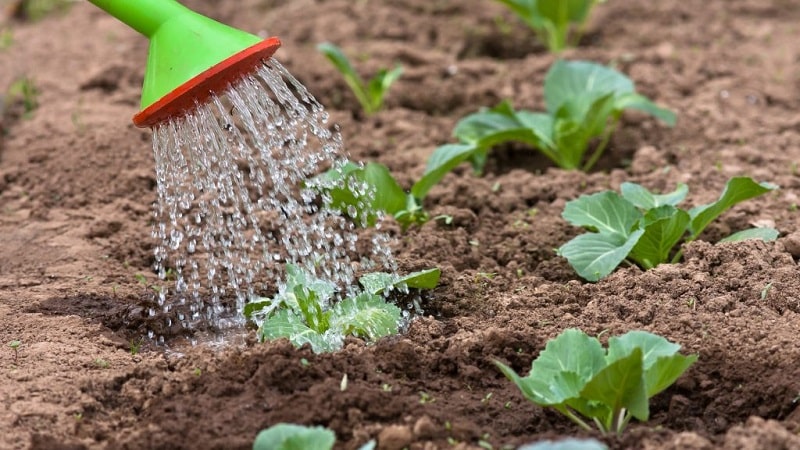
At the beginning and throughout growth, it is necessary to monitor soil moisture. Watering should be frequent. At the initial stage of development, 2 liters of water are poured under each bush at a time. As it grows, the amount of water increases to 5 liters. 20 days before harvesting, watering is stopped.
Top dressing
Many gardeners try not to use chemical mineral fertilizers. A good alternative would be an infusion of chicken manure, mullein, watering and dusting with wood ash. Feeding is carried out two weeks after planting the seedlings, then again after 12 days, when pouring heads of cabbage and a month before harvesting.
Advice. It is better to combine watering and fertilizing.
Weeding and loosening
During the growth of cabbage, weeds should not be allowed to grow. They are removed simultaneously with loosening the soil using a hoe. The depth of treatment of the surface layer is 7 cm. To increase the root mass, three weeks after planting, hilling is carried out with a hill height of 20 cm.
Pest and disease control
Tobia has high resistance to rot and fusarium, but can be affected by aphids and cruciferous flea beetles. To combat them, ground black (red) pepper, wood ash, and tobacco dust are scattered under the bushes and on top of the leaves. The pest that has to be controlled manually is the cabbage caterpillar.
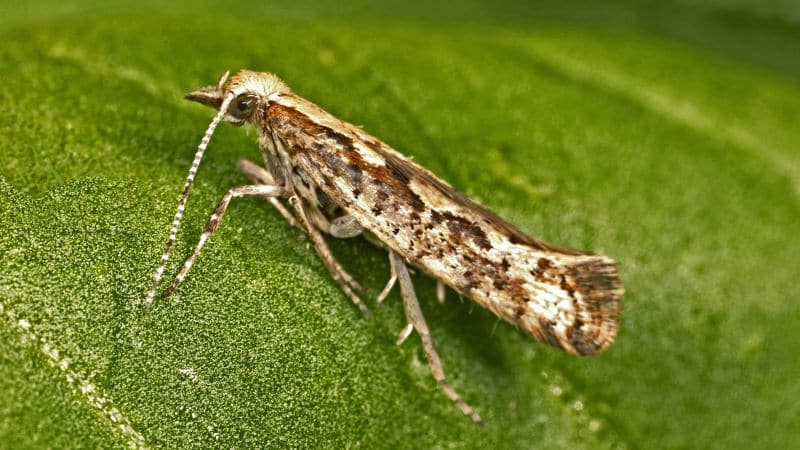
Harvest and storage
Hybrid Tobia cabbage is frost-resistant, so it is not afraid of frost. But to maintain high shelf life, the exposure of vegetables to low temperatures should not be prolonged. Harvesting cabbage from under the snow at -6°C and below negatively affects the storage of the crop, as do repeated frosts after thawing.
Important. If the cabbage is subject to severe frost, the heads of cabbage should thaw without being cut. Usually this takes 3-4 days. After this, the cabbage can be cut and sent for the winter.
How to properly cut vegetables for storage:

- Harvesting takes place on a sunny, warm day;
- cabbage is dug up with a shovel, clearing the roots and stumps from the ground;
- poorly formed heads of cabbage are removed, the upper damaged leaves are torn off, leaving 1-3 cover leaves;
- The roots can be cut off or left depending on the storage method.
Before storing cabbage, it needs to be dried. To do this, build a canopy that will protect the crop from precipitation and sunlight, place the heads of cabbage under it and hold it for 4-5 hours.
Tobia f1 hybrid is best stored in a dry cellar at a temperature of -4°C. When properly harvested, the shelf life reaches up to 6 months.
What difficulties may there be when growing
Vegetable growers do not note any particular problems when planting and caring for this hybrid.The most important thing is to choose the right place for planting and prepare the soil according to all the rules. The only negative is the inability to collect your own seeds.
Reviews and advice from gardeners
Vegetable growers speak positively about the hybrid. Some admire the taste, others are satisfied with the frost resistance characteristics, and still others plant the vegetable for an early harvest. But all the reviews have one thing in common: Tobia f1 cabbage is one of the best Dutch hybrids.
Svetlana, Altai Territory: “The weather in our region is quite unstable. Summer residents have a hard time. Frosts can strike even in June and destroy all plantings. This has happened to me more than once. Sparing my labor, I began to choose only frost-resistant vegetables, among which I can highlight Tobia cabbage f1. I’ve been planting it for 12 years now and don’t want to change it for others. We are always with cabbage, which ripens early, stores well, and dishes with it are simply culinary masterpieces. I recommend this magnificent hybrid to everyone.”
Claudia, Ekaterinburg: “I love experimenting with growing vegetables. I plant a lot, since the amount of land allows. Speaking of cabbage, I would like to highlight the hybrid Tobia f1. I started planting it as an experiment in 2009 and continue to this day. You could say I found the perfect white cabbage hybrid for myself. It is delicious to prepare, stores well, and most importantly, it is not afraid of frost, which is not uncommon in our area. I recommend it to you too".
Read also:
Early maturing cabbage hybrid Krautkaiser F1
Conclusion
Tobia f1 is a unique hybrid of frost-resistant and high-yielding white cabbage.The possibility of seedling and non-seedling planting, ease of care, high shelf life with proper storage have made it popular in many regions of Russia. Tobia cabbage f1 is an excellent option for areas with unstable weather and insufficiently nutritious soil.